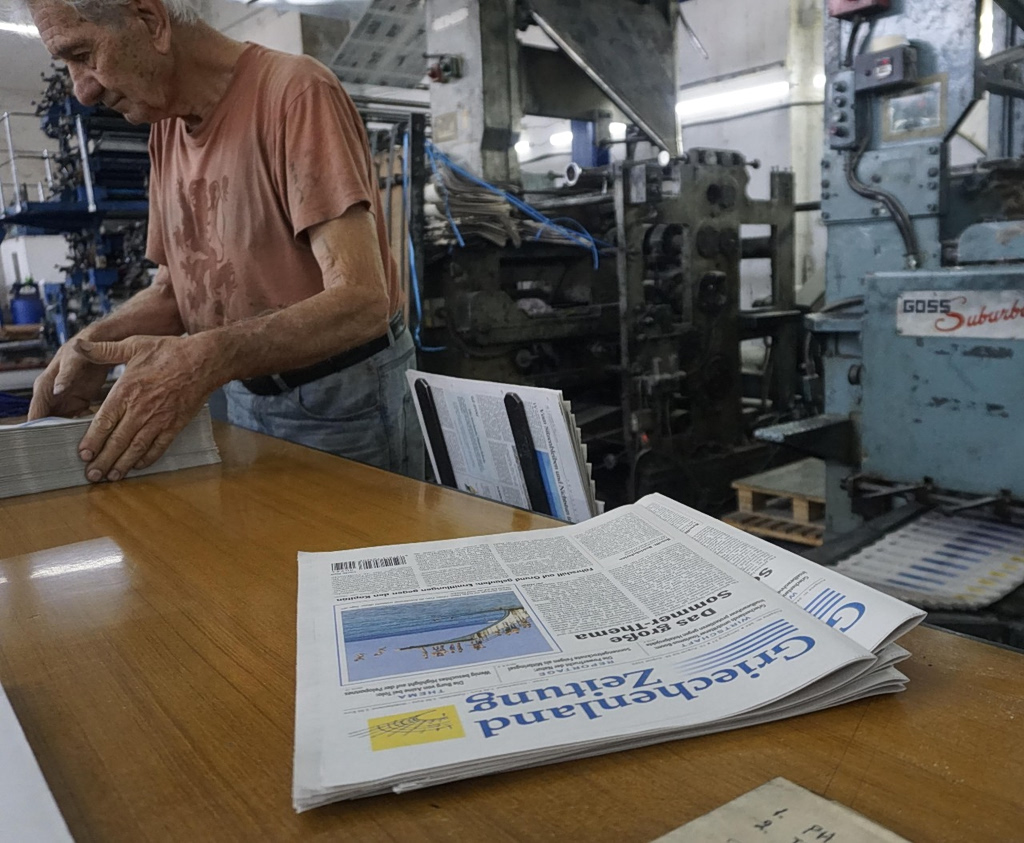There’s a bit of misdirection going on with the Byzantine Crypt at the Metropolitan Museum of Art. Unlike the Temple of Dendur, which is a temple, the Crypt isn’t a crypt but a gallery, and though the objects it contains are Byzantine, the space itself is turn-of-the-century industrial. Carved out between brick arches that support the museum’s grand staircase, there is a sepulchral quality here, with its low light and chilly surfaces: an appropriate setting for an exhibition that explores art’s relation to death and the hereafter.
“Afterlives: Contemporary Art in the Byzantine Crypt” aims to connect art made after 1960 that deals with those weighty subjects to the funerary, religious and secular works that are part of the gallery’s permanent presentation—objects from Byzantine Egypt, most roughly 1,500 years old.
It’s a small show—just a dozen or so recent objects, curated by Andrea Achi and Akili Tommasino—that leans into its morbid theme. Images from Paul Fusco ’s “RFK Funeral Train” series (1968) serve as eerie memento mori, putting us alongside the slain Robert F. Kennedy as his body was taken from New York to Washington, countless spectators lining the track and staring at us. Liu Zheng ’s “Three Women in a Country Funeral, Long Xian, Shaanxi Province” (2000) is suffused with sorrow, the mourning trio’s grief etched on their faces. And Michael Aschenbrenner ’s “Damaged Bone Series” (1990) is a haunting exploration of the violence of war, broken bones made of glass that have been repaired with wire and strips of fabric, splinted with delicate twigs.
While these works are deeply affecting, any links to the Byzantine items on view are tenuous at best. The bone and ivory carvings from the fourth to sixth century, for example, aren’t laments but celebrations but celebratory, images of Dionysus, Silenus, Nike and Nilos. Whitfield Lovell ’s 2000 portrait on wood seems to have been included simply because it shares characteristics in its material and subject matter with a fourth-century stela fragment, likely a reused panel from a Roman-Egyptian coffin: If the new work is connected to ideas of death or the afterlife like the earlier piece, it doesn’t show. Melvin Edwards ’s “Ready Now Now (Lynch Fragment)” (1988) is a terrifying sculpture that meditates on violence and America’s fraught racial past, but other than being a wall ornament like several other works here, it’s unclear how it fits the show’s broader theme. Little of the pre-modern work here is sad, and little overtly fixated on death. Rather, it is overwhelmingly spiritual, embracing both early Christian and mythological imagery.
More fitting is Gunnar Theel ’s “Enibas” (1992), a tombstone-like hunk of patinated bronze that offers a sleek modern counterpoint to the detailed limestone funerary stelae from centuries ago. Tavares Strachan’s “ENOCH (display unit)” (2015-17) is a 21st-century canopic jar that honors the memory of Robert Henry Lawrence Jr., the first black astronaut, an echo of the way that the Byzantine objects here embrace Egyptian traditions. And Anita Huffington ’s classically styled alabaster female torso, “Persephone” (1999), was sculpted to commemorate the artist’s daughter, who died at the age of 23—a fitting memorial that is both personal and timeless, modern in the way that it elevates the individual to the place of ancient god without giving into narcissism.
Amid the grave nature of many of these works, Adrian Piper ’s “Everything #4” (2004) offers a bit of whimsy. An editioned series of mirrors that read “Everything Will Be Taken Away,” they are scattered throughout the museum (in addition to one in the Byzantine Crypt). Yet the scavenger-hunt aspect of seeking them out gives way to a deeper message about the unstoppable march of time. As we discover one mirror after another, the context of the works changes—flanked by a Gothic Revival chair, tucked into a corner by a contemporary video work, hung across from a morbid Dutch Golden Age still life—but the point, that the end eventually comes for us all, remains the same. This could easily be an unsettling aide-mémoire, but, after leading us through the splendor of the Met’s holdings, it serves as a welcome reminder of the beauty of life and art itself.
Afterlives: Contemporary Art in the Byzantine Crypt
The Met Fifth Avenue, through Jan. 25, 2026


